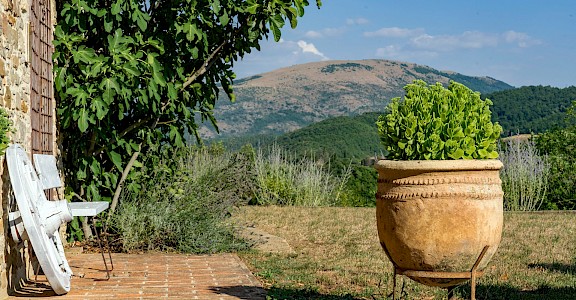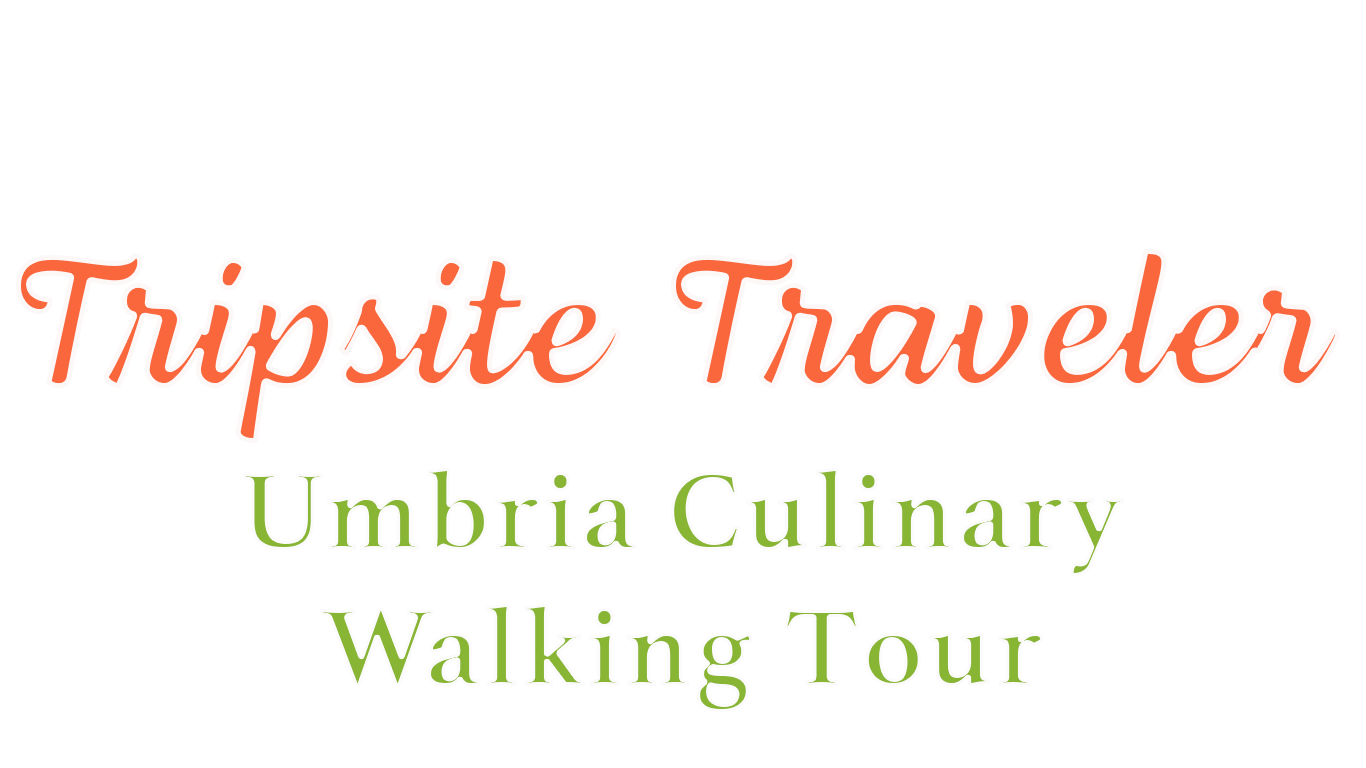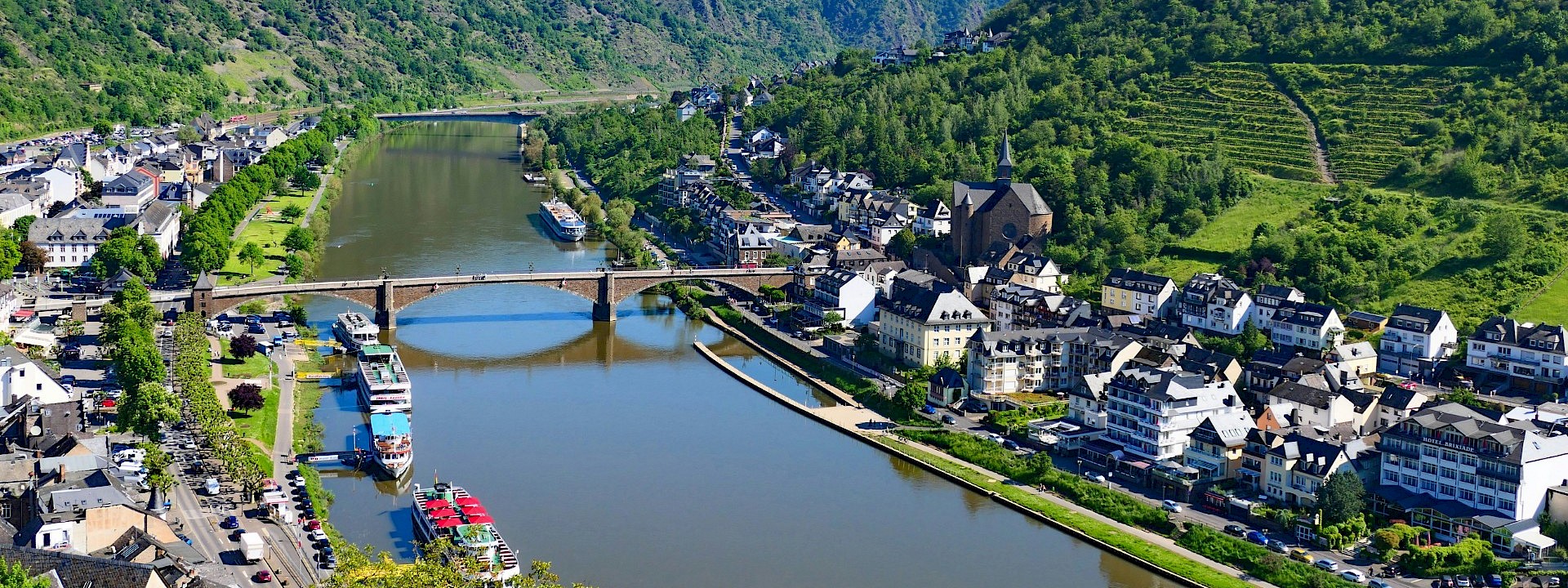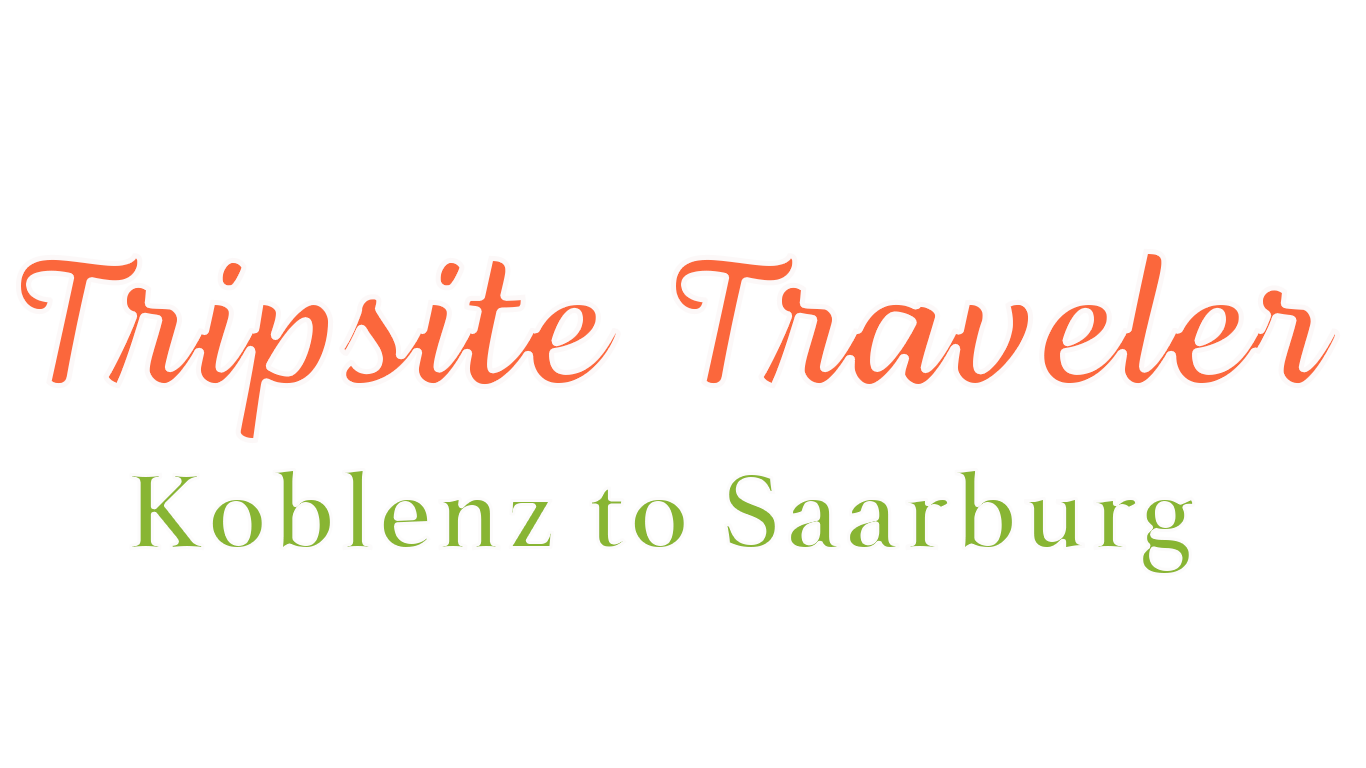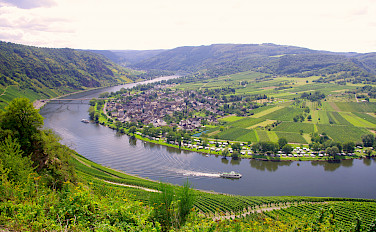“Brilliant, Just Brilliant” - Cycling the Moselle from Koblenz to Saarburg
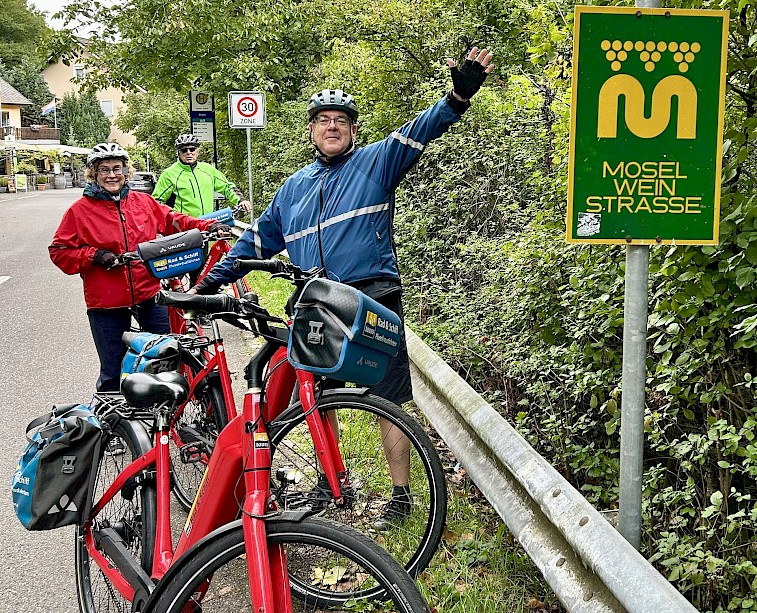
By the time we signed up for the Bike & Boat trip from Koblenz to Saarburg, it was already our third go-round with Tripsite. Not exactly our first rodeo on the whole bike-and-boat scene. And just like the first two, this one was amazing! But here’s the truth: no matter how many times you do one of these bike-and-boat trips, it never loses its magic. Each one feels like stepping into a brand-new story. And this one? Let’s just say it was a grin-on-your-face-for-days kind of amazing.
The most challenging part, as always, came afterward. Back home, the questions rolled in: “So, how was it?” You’d think by the third trip I’d have mastered the answer, right? Nope. Every time, I’m standing there, tongue-tied. How do you sum up days of pedaling past castles, sipping wine on a terrasse somewhere, surrounded by medieval history and architecture, and pretending you’re basically living in a travel brochure? “It was awesome” just doesn’t cut it. That’s where Margaret comes in.
I met Margaret last year on the Bolzano-Montova-Venice bike-and-boat trip. She was celebrating her 80th birthday with her daughter. Eighty! And there she was, pedaling and cruising like it was the most natural thing in the world. Whenever anyone asked her what she thought of the trip, she didn’t launch into stories, or lists, or highlights. She just smiled and said: “Brilliant, just brilliant.”
I’ve carried Margaret’s wisdom with me ever since. Really, she nailed it. That simple reply carried me through this Moselle journey. Like that one afternoon we found ourselves in Beilstein, a tiny gem of a town tucked along the Moselle. We sat on a terrace overlooking the river, the kind of place that makes you want to linger for hours. The afternoon sun turned the water into a ribbon of silver, vineyards climbing the hillsides in neat green lines. A light breeze carried the scent of grapes and river air, mingling with the sweetness of fresh kuchen set before us. Coffee arrived steaming and strong. I held it in both hands, sipped slowly, and tried not to grin too hard at how perfect it all was. Somewhere in the distance, church bells began to ring, soft but insistent, as if reminding me that life here still moved to ancient rhythms. I leaned back in my chair, letting the moment hold me. This wasn’t just a coffee break. It was the trip distilled into a single, unforgettable pause. Brilliant. Just brilliant.
Vineyards. Vineyards. And—surprise—more vineyards. Every day our wheels rolled past endless green rows marching up the hillsides, and yes, we may have “accidentally” sampled a grape or two straight off the vine, just to make sure quality control was up to snuff.
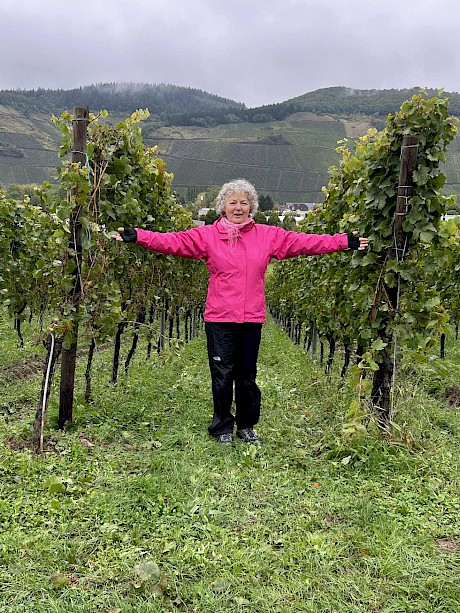
Vineyards, vineyards, and more vineyards. We rode through vineyards every day, and even sampled some of the grapes along the way.
Just when you think the scenery couldn’t possibly get any better, the path curved—and suddenly, there it was: the mighty Cochem Castle. Perched high on a crag, rising above the jumble of half-timbered houses below, it commanded the Moselle with a grandeur that took your breath away. The largest castle on the river, it is nothing short of jaw-dropping. A distant glimpse across the river wasn’t enough—we had to climb up and see the castle for ourselves. The climb wound upward, always just curving enough to keep the castle hidden a little longer. My knees complained, and I may have muttered a few choice words under my breath. But then, at a sudden bend, it appeared. Like something out of a fantasy novel, its towers and turrets piercing the sky, its stone walls weathered by eight centuries of history.
For a moment, I just stopped. Stopped walking, stopped thinking. Just stared. The sweat on my forehead didn’t matter. The creaking in my joints - forgotten. Because there it was—majestic, defiant, unbroken. Standing there, looking out over the river and the rooftops below, I felt as though I’d stepped into a chapter of living history—one of those rare places where culture, scenery, and time itself all come together in a single, perfect afternoon. Brilliant, just brilliant!
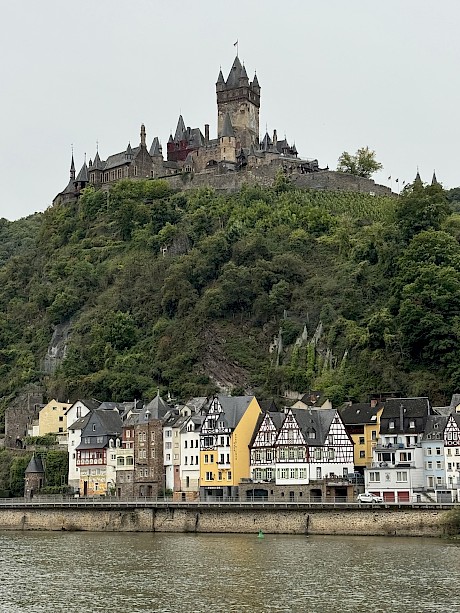
But the moment that stayed with me was the simplest: eating cherry strudel in the shadow of the Porta Nigra. Two thousand years of history towering over me, and I was just another passerby in its long story, eating strudel that had just come out that morning from the bäckerie ovens. Talk about history and pastry coming together in the perfect moment. Somehow, the pairing felt just right. Brilliant. Just brilliant.
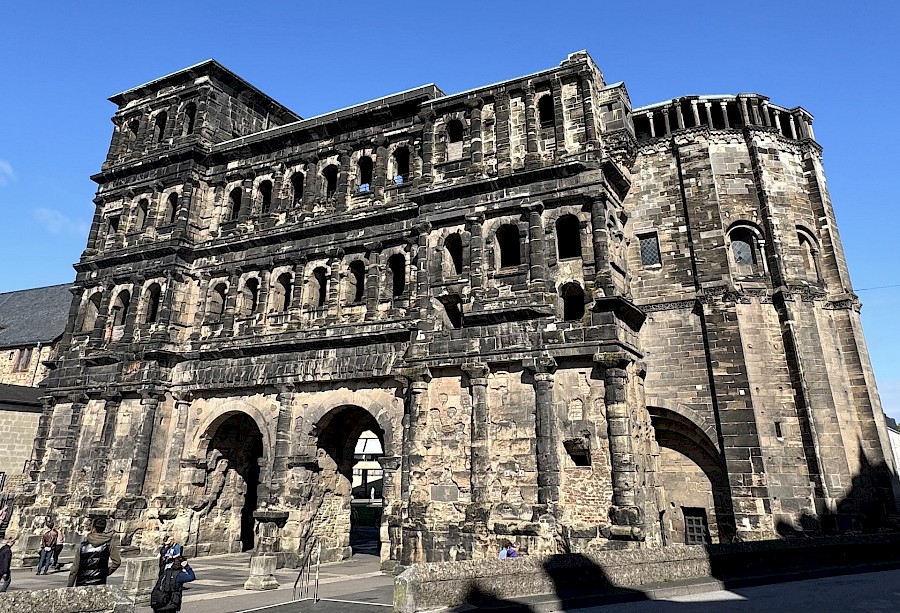
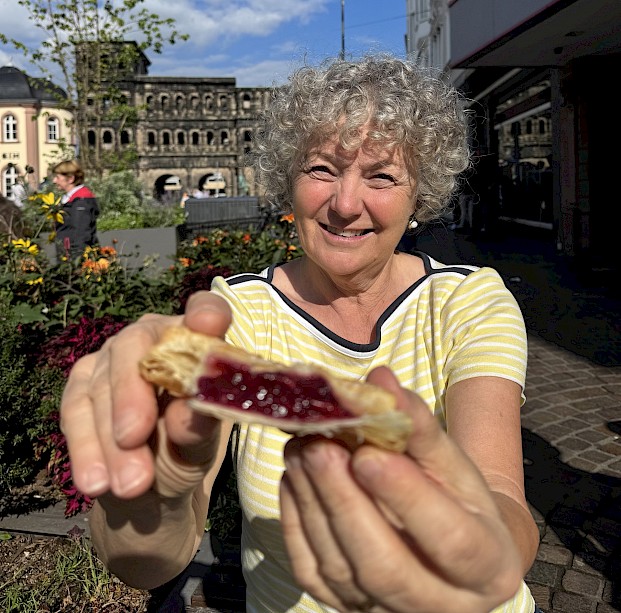
And then came the rhythm of the journey itself—the very thing that makes bike-and-boat so irresistible. I’m still chasing the right words to capture those days along the Moselle: pedaling at a gentle pace, gliding through villages crowned with pale stone churches, collecting memories that cling for a lifetime. Some moments etch themselves too deeply to fade—like standing in the heart of Bernkastel’s medieval Marktplatz. There, we were surrounded by gabled, half-timbered houses dating back to the 1600s. Their crooked beams and painted facades have stood the test of time and standing in the middle of it all felt like stepping straight into a storybook.
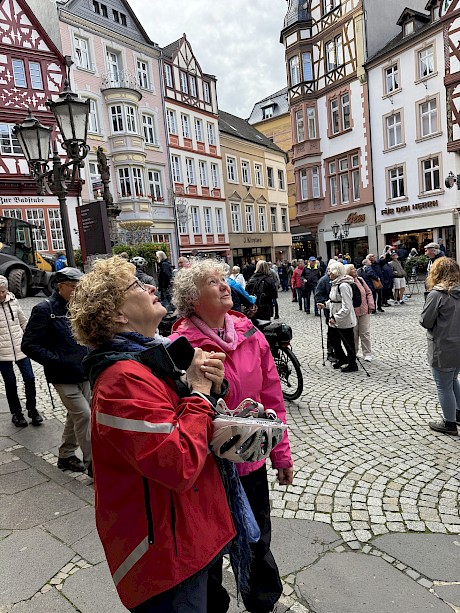
Each afternoon, we would glide back to The Olympia, our home away from home which waited quietly for us downstream. A smiling crew welcomed us back, whisking our bikes away to ready them for the next day’s ride—a simple gesture that felt like pure luxury. To walk onboard and be handed a steaming cup of coffee and a little plate of sweets—just enough to carry me gently toward supper—how could words ever capture that simple joy?
Side excursions were made available, one of which had us bumping along in a covered wagon through some of Europe’s steepest vineyards, clinking glasses of Zeller Schwarze Katz while laughing with a merry crew of tipsy Americans, a few proud Canadians, and a handful of Finns who seemed just as amused by the whole scene.
Then came dinner, always a feast, not only for the food but for the conversations with fellow cyclists as we shared the day’s discoveries. Evenings stretched out gently, sometimes on the deck beneath the fading sky, sometimes in the lounge, until we slipped into our cabin, cozy and inviting, to fall asleep with the happy thought: tomorrow, it all begins again.
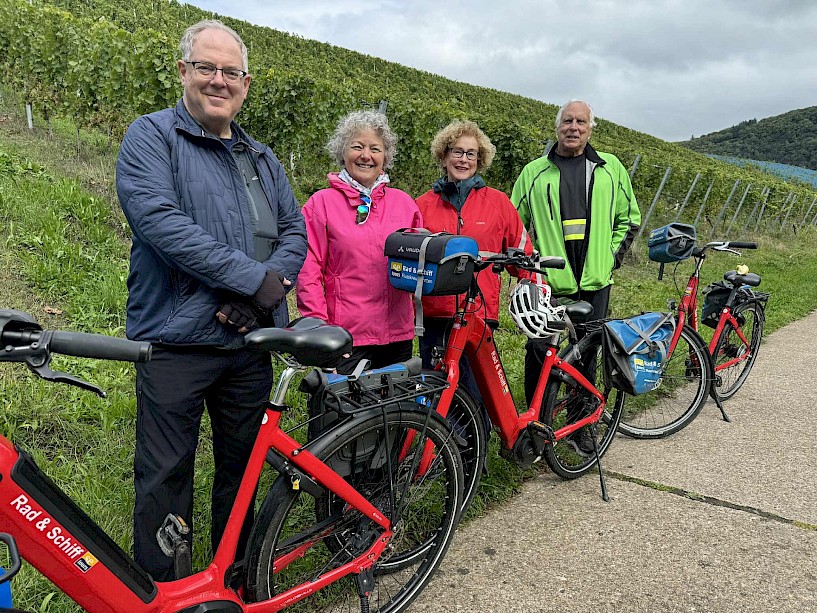
And that’s where Margaret comes back in. Because when people ask me, “So, how was it?”—I could tell them about Beilstein’s coffee, or Cochem Castle’s reveal, or Trier’s weight of history, or the rhythm of cycling and cruising. I could pile on the details, gush about the food, rave about the landscapes. But none of it quite captures the essence. So instead, I borrow Margaret’s words. "Brilliant. Just brilliant." And honestly? That says it all.
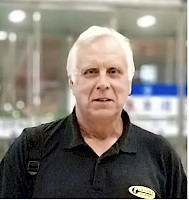
Raymond Lemoine recently wrapped up a forty-year career in education and now spends more time on two wheels than at a desk. He and his wife Madeleine are passionate cyclists, with adventures that have taken them across Canada, through Europe, and into Central and South Asia. No matter how far they ride, they always love coming home to Port Moody, British Columbia.

